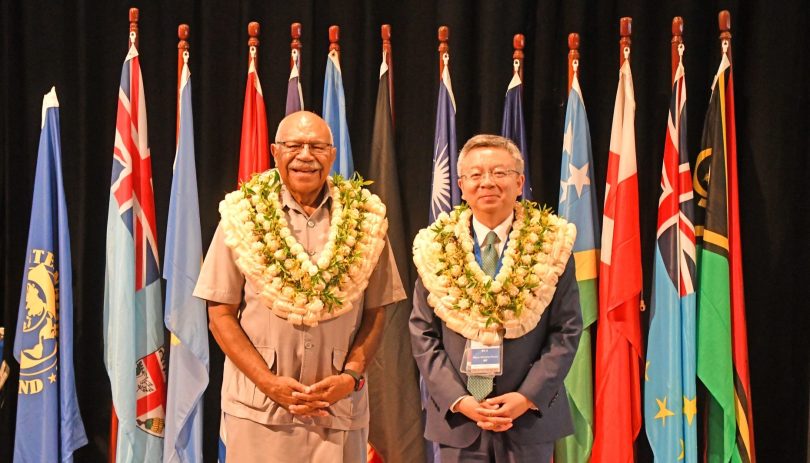The Fijian Prime Minister Sitiveni Rabuka is the latest to add his voice to calls for the free movement of people within the Pacific. That means the call has been supported now by leaders from Samoa, Solomon Islands and Fiji. The time for debating whether this idea should be taken seriously is over. The question now is how to take it forward.
The idea is not a utopian fantasy. Citizens of New Zealand and Australia, the Pacific’s two largest countries, already enjoy virtually unlimited free movement between the two countries. Citizens of Cook Islands, Niue and Tokelau hold New Zealand passports and so also enjoy the same rights. Therefore five of the Pacific Islands Forum’s 19 members are already where other Pacific leaders are saying they want their countries to be.
Virtually all Pacific countries allow short-term, visa-free travel for the citizens of other Pacific countries. Australia and New Zealand both allocate permanent residency slots to various Pacific countries every year. There is a lot to build on.
At the same time, we should be realistic and acknowledge the obstacles. First, the oft-used term “visa-free” is anathema to Australia which insists that even those with New Zealand passports need a visa to enter the country; it’s just one they pick up on arrival.
Second, New Zealand trialled visa-free access for Fijians, Samoans and Tongans for trips up to three months in December 1986 but dropped it quickly, in February 1987. (“Fears of a massive increase in the numbers of Pacific Island overstayers were prompted by cases of visitors enrolling children in Auckland schools, and by the organisation of special charter flights to bring Tongans to New Zealand.” – Bedford and Larner, 1992, p.69.) Visa waivers for Tuvalu, Kiribati and Nauru were dumped in 2003.
Third, the Pacific includes countries of hugely varying size, from tiny Nauru with a population of 12,500 to large Papua New Guinea with a population of around 10 million. Allowing free movement of people between Nauru and Australia is one thing; allowing free movement between PNG and Australia quite another.
Fourth, people have different things in mind when they talk about the freer movement of people or visa-free access. Some are focused on short-term travel: being able to travel for a holiday, business or to visit family without the need to apply for a visa. Others want something much more ambitious: an EU-style agreement that supports long-term migration within the Pacific.
How to get beyond these obstacles?
My first suggestion is that we should articulate the goal as one of free movement of people rather than visa-free travel. This wording puts people first, and avoids getting caught up in linguistic minefields around different types of visa arrangements.
Second, this is a matter that should be taken up at the regional level. Migration – unlike temporary mobility for work – is not a trade issue and the most appropriate regional body to deal with the free movement of people is the annual Pacific Islands Forum Finance and Economic Ministers Meeting (FEMM). Last year’s FEMM did, perhaps for the first time, discuss migration matters. That is a foundation on which this year’s and subsequent FEMM meetings should build on. Ultimately though, this is such an important issue that it should be discussed at the annual Pacific Islands Forum Leaders Meeting, which this year is in August in Tonga.
Third, what should leaders and ministers agree on? The free movement of people within the Pacific should be positioned as a common aspiration that all countries should sign on to. Each country should then have to report annually on what they are doing to realise that aspiration. Countries should be given some freedom as to how they interpret the goals, but expert or peer reviews should be undertaken to point out to countries where they could go further to expand Pacific migration opportunities. Countries should have to explain why migration privileges extended to some Pacific nations or non-Pacific ones are not extended to all Pacific nations. (This is the idea of giving Pacific countries “most favoured nation status” when it comes to migration policies, proposed by Fiji Deputy PM Biman Prasad in his Australasian AID Conference speech in December last year.)
The idea of the free movement of people across the Pacific fits in naturally with the now prevailing concept of the Blue Pacific. Now that it has been endorsed by the leaders of three Pacific nations, it is time for the regional architecture to step up and take it forward.



How can I participate in these research?